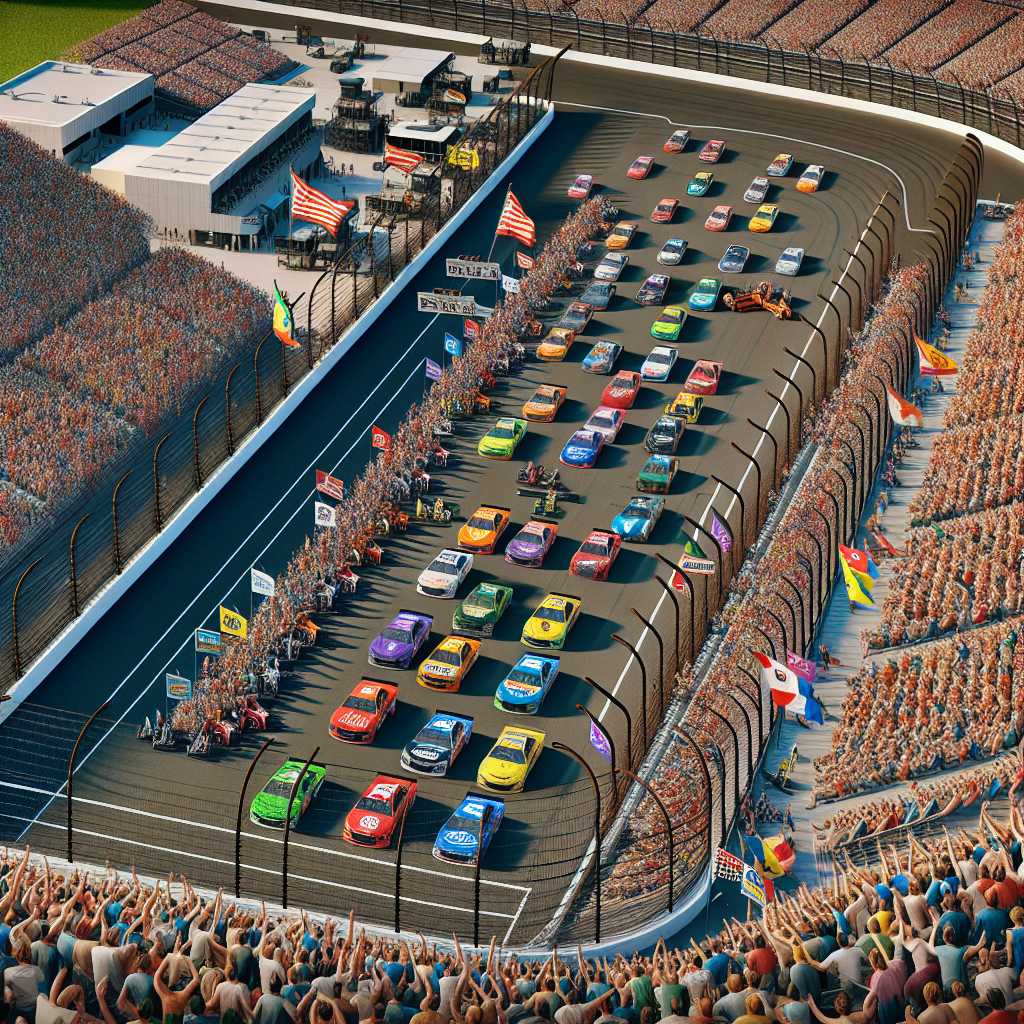The Evolution and Significance of the Brickyard 400 in Motorsports History
The Brickyard 400 stands as one of the marquee events in NASCAR’s Cup Series. Debuting in 1994, it has become not just a testament to the sport’s enduring popularity but also a celebration of its rich heritage, converging at the famed Indianapolis Motor Speedway (IMS). Renamed later as the Big Machine Vodka 400 at the Brickyard, it adds to the illustrious history of a track most known for the legendary Indianapolis 500.
Origins and Inception of the Brickyard 400
The Indianapolis Motor Speedway, a temple of speed and racing innovation, had been known predominantly for open-wheel racing since its inception in 1909. The idea of bringing stock car racing’s premier series, NASCAR, to the hallowed grounds of IMS took tangible form when, in the early 1990s, talks began about adding a NASCAR event to complement the Indy 500.
On August 6, 1994, history was made as NASCAR held its inaugural event at the Brickyard – a name inspired by the yard of bricks that remains at the speedway’s start-finish line, a vestige of the original brick surfacing. The Brickyard 400 quickly ascended to become one of NASCAR’s premier races.
Evolution Through Time
The significance of the Brickyard 400 has remained high through changes across decades. Even as various adjustments have been made in NASCAR’s calendar and race formats, the event continued to evoke reverence among drivers and fans alike.
One pivotal change came when NASCAR shifted away from traditional naming conventions; corporate sponsorships began headlining events, thus altering the original Brickyard 400 title. These sponsorships assert the financial dimensions driving elite motorsport contests and their widespread appeal.
Not just confined to the track changes or business elements, technology and safety upgrades over time have transformed how this iconic race is run, mirroring NASCAR’s evolution and adaptations toward enhancing exhilarating competitions and safeguarding drivers.
Challenges Faced
Despite its importance in motorsports tradition, over the years, attendance and viewership for the Brickyard 400 encountered ups and downs. Attracting fans has posed challenges in an ever-contentious market where entertainment options are abundant. Weather delays and schedule shifts also have impacted viewer engagement.
Moreover, with Indianapolis’ legacy firmly entrenched with open-wheel race cars and Formula One series in its past schedules, diversifying with stock cars split traditionalist viewpoints. For some purists, NASCAR’s presence disrupted a century-old narrative exclusive to other types of racing.
The Race Today
In recent iterations, to invigorate interest and add new challenges for drivers and teams, iterations such as running part of the race on the IMS road course have been experimented with. Such changes provide refreshing twists on what had become a time-honored formula while remaining true to racing principles that prioritize skill, endurance, and adaptability.
As of my knowledge cutoff in 2023, despite facing stiff competition from other iconic races in the NASCAR calendar like the Daytona 500 and new venues that continue to enrich NASCAR’s diverse lineup, the Brickyard 400 remains a monumental event that commands respect within motorsport circles worldwide.
Significant Winners and Records
Over the years, some of NASCAR’s biggest names have conquered the track at IMS. Jeff Gordon won the inaugural Brickyard 400 and etched his name five times on its trophy. Dale Earnhardt and Jimmie Johnson are among those who claimed victory at this storied venue – encounters between legends which have enriched NASCAR lore.
Records at IMS often form benchmarks for success across career milestones in stock car racing. Winning strategies here frequently translate into broader season triumphs given the complexity and prestige associated with mastering The Brickyard.
Notes
and the Brickyard 400
